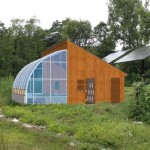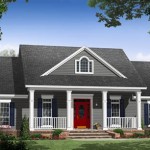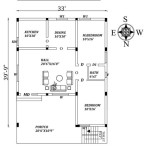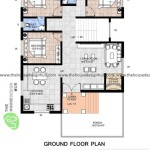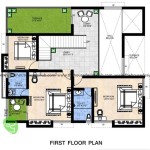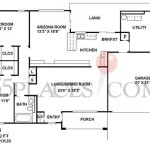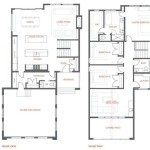While avoiding contractions is generally maintained, it is permissible to use the form "it is" instead of "it's" where stylistic flow and meaning are improved.
Huge Mansion Floor Plans: A Comprehensive Guide
The concept of a huge mansion floor plan often conjures images of sprawling estates, intricate architectural designs, and an abundance of luxurious amenities. These plans, designed for opulent living, extend far beyond the standard residential blueprint. They represent a significant investment and a considerable undertaking, requiring careful consideration of lifestyle, aesthetic preferences, and long-term functionality. This article provides a comprehensive overview of huge mansion floor plans, outlining key considerations, common features, and potential challenges associated with their development.
Defining what constitutes a "huge mansion" is subjective, but generally, these residences exceed 8,000 square feet and often reach upwards of 20,000 square feet or more. The floor plan complexity increases exponentially with size, demanding expertise in architectural design, structural engineering, and interior layout. Selecting the appropriate floor plan is crucial, not only for maximizing the use of space but also for establishing a cohesive and aesthetically pleasing living environment.
Key Considerations in Mansion Floor Plan Design
Several critical factors must be addressed when conceiving a huge mansion floor plan. These considerations directly impact the overall functionality, aesthetic appeal, and long-term livability of the residence. Ignoring these aspects can lead to significant design flaws and costly revisions during the construction process.
First, lifestyle compatibility is paramount. The floor plan must reflect the owner's daily routines, hobbies, and entertainment preferences. For example, a family that frequently hosts large gatherings will require expansive entertaining spaces, such as grand ballrooms, formal dining rooms, and well-equipped catering kitchens. Conversely, an individual who values privacy and solitude might prioritize secluded areas like libraries, home offices, or private gardens.
Second, zoning and flow are essential for creating a comfortable and functional living environment. The floor plan should clearly delineate between public and private areas, ensuring that guests do not inadvertently intrude upon personal spaces. A well-defined circulation pattern facilitates easy movement throughout the mansion, preventing bottlenecks and promoting a sense of spaciousness. Consider the adjacency of different areas. For example, the kitchen should ideally be located near the dining room and pantry for ease of serving and storage.
Third, accessibility is a crucial factor, especially for multi-story mansions. Elevators are often necessary for individuals with mobility issues or simply for convenient access between floors. Wide hallways, ramps (if applicable), and accessible bathrooms should be incorporated into the design to ensure that the mansion is inclusive and accommodating for all occupants and visitors. Universal design principles should be considered to promote long-term usability and adaptability.
Common Features of Huge Mansion Floor Plans
While specific features vary depending on individual preferences and architectural styles, certain elements are commonly found in huge mansion floor plans. These features contribute to the luxurious and opulent lifestyle associated with these residences.
One prevalent feature is the inclusion of multiple master suites. These suites typically encompass a spacious bedroom, a luxurious bathroom with soaking tubs and separate showers, a walk-in closet, and often a private sitting area or balcony. Multiple master suites provide flexibility for accommodating guests, family members, or staff, while ensuring privacy and comfort for all occupants.
Elaborate entertainment spaces are another hallmark of mansion floor plans. These spaces may include home theaters, game rooms, bars, wine cellars, and indoor pools. These amenities are designed for relaxation, recreation, and social gatherings. Home theaters often feature state-of-the-art audio-visual equipment and comfortable seating arrangements, while game rooms are equipped with billiards tables, poker tables, and other forms of entertainment.
A gourmet kitchen is also a standard feature in most huge mansions. This kitchen is typically equipped with high-end appliances, ample counter space, and custom cabinetry. Often, a separate catering kitchen is included to facilitate large-scale meal preparation for parties and events. These kitchens are designed to be both functional and aesthetically pleasing, serving as the heart of the home.
Furthermore, many mansion floor plans incorporate dedicated service areas, such as staff quarters, laundry rooms, and storage spaces. These areas are designed to support the smooth operation of the household and to provide comfortable living accommodations for domestic staff. Staff quarters may include bedrooms, bathrooms, and small living areas, while laundry rooms are equipped with multiple washers and dryers. Ample storage space is crucial for maintaining an organized and clutter-free living environment.
Potential Challenges in Implementing Mansion Floor Plans
Despite the allure of a sprawling mansion, implementing these floor plans presents a unique set of challenges. These challenges range from budgetary constraints to complex construction logistics and ongoing maintenance requirements.
Cost is a significant concern. The construction of a huge mansion is a substantial investment, requiring careful budgeting and cost management. Construction costs can vary widely depending on the complexity of the design, the quality of materials used, and the location of the property. Unexpected expenses can arise during the construction process, so it is crucial to have a contingency fund to cover unforeseen costs.
Permitting and regulatory compliance can also be a lengthy and complex process. Local building codes and zoning regulations can impose restrictions on the size, height, and design of the mansion. Obtaining the necessary permits and approvals can take several months or even years, depending on the jurisdiction. It is essential to work with experienced architects and contractors who are familiar with local regulations and can navigate the permitting process efficiently.
Construction management represents another considerable challenge. Building a huge mansion requires a coordinated effort from a team of professionals, including architects, engineers, contractors, and interior designers. Effective communication and collaboration are essential to ensure that the project stays on schedule and within budget. A qualified construction manager is crucial for overseeing the project and resolving any issues that may arise.
Finally, ongoing maintenance and upkeep can be a significant burden. The sheer size of a mansion requires a substantial investment in maintenance, including cleaning, landscaping, and repairs. Regular maintenance is essential to prevent deterioration and to preserve the value of the property. Home automation systems can help to streamline maintenance tasks, but they also require ongoing upkeep and updates.
Energy efficiency is another critical consideration in the design of huge mansions. Due to their expansive size, these homes can consume a significant amount of energy for heating, cooling, and lighting. Implementing energy-efficient design strategies, such as using sustainable building materials, installing high-performance windows and insulation, and incorporating renewable energy sources, can help to reduce energy consumption and minimize environmental impact. Solar panels, geothermal heating, and rainwater harvesting systems are all viable options for reducing the environmental footprint of a huge mansion.
Security is an essential aspect of mansion design. With valuable possessions and potentially high-profile occupants, security measures are crucial to protect against intrusion and theft. Sophisticated security systems, including surveillance cameras, alarm systems, and access control measures, should be integrated into the design of the mansion. Gated entrances, perimeter fencing, and security personnel can also enhance the security of the property.
Landscape design plays an integral role in the overall aesthetic appeal of a huge mansion. A well-designed landscape can enhance the beauty of the property and create a sense of privacy and seclusion. Landscaping may include manicured lawns, gardens, trees, and water features. Outdoor living spaces, such as patios, decks, and swimming pools, should be integrated into the landscape design to create a seamless transition between the interior and exterior of the mansion.
Interior design is crucial for creating a cohesive and aesthetically pleasing living environment within the mansion. The interior design should complement the architectural style of the mansion and reflect the owner's personal taste. High-quality materials, custom furnishings, and meticulous attention to detail are essential for creating a luxurious and comfortable living space. The interior design should consider the functionality of each room and the overall flow of the mansion.
In conclusion, planning a huge mansion floor plan requires careful consideration of lifestyle, aesthetic preferences, and long-term functionality. It is a complex undertaking that demands expertise in architectural design, structural engineering, and interior layout. By addressing key considerations, incorporating common features, and mitigating potential challenges, it is possible to create a truly exceptional living environment that reflects the owner's unique vision and aspirations.

Second Floor Huge Homes Floors Plans Love Jhmrad 68827 Mansion Plan Dream House Mansions

Marvelous Mansion Home Plans 1 Luxury Floor Plan House Dream

Balm Castle House Plans Luxury Home

Mansion Floor Plan Plans Vintage House

Humber House Mansion Plans Luxury

1377 751 Mansion Floor Plan Luxury Plans House

Large House Plan Examples

Large Luxury Home Plans With Pictures Houseplans Blog Com

Loma Prieta House Plan Sater Design Collection

Castle Luxury House Plans Manors Caux And Palaces In European Period Styles

